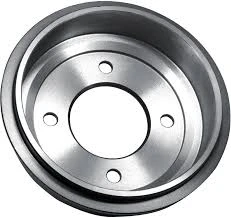
-
 Afrikaans
Afrikaans -
 Albanian
Albanian -
 Amharic
Amharic -
 Arabic
Arabic -
 Armenian
Armenian -
 Azerbaijani
Azerbaijani -
 Basque
Basque -
 Belarusian
Belarusian -
 Bengali
Bengali -
 Bosnian
Bosnian -
 Bulgarian
Bulgarian -
 Catalan
Catalan -
 Cebuano
Cebuano -
 Corsican
Corsican -
 Croatian
Croatian -
 Czech
Czech -
 Danish
Danish -
 Dutch
Dutch -
 English
English -
 Esperanto
Esperanto -
 Estonian
Estonian -
 Finnish
Finnish -
 French
French -
 Frisian
Frisian -
 Galician
Galician -
 Georgian
Georgian -
 German
German -
 Greek
Greek -
 Gujarati
Gujarati -
 Haitian Creole
Haitian Creole -
 hausa
hausa -
 hawaiian
hawaiian -
 Hebrew
Hebrew -
 Hindi
Hindi -
 Miao
Miao -
 Hungarian
Hungarian -
 Icelandic
Icelandic -
 igbo
igbo -
 Indonesian
Indonesian -
 irish
irish -
 Italian
Italian -
 Japanese
Japanese -
 Javanese
Javanese -
 Kannada
Kannada -
 kazakh
kazakh -
 Khmer
Khmer -
 Rwandese
Rwandese -
 Korean
Korean -
 Kurdish
Kurdish -
 Kyrgyz
Kyrgyz -
 Lao
Lao -
 Latin
Latin -
 Latvian
Latvian -
 Lithuanian
Lithuanian -
 Luxembourgish
Luxembourgish -
 Macedonian
Macedonian -
 Malgashi
Malgashi -
 Malay
Malay -
 Malayalam
Malayalam -
 Maltese
Maltese -
 Maori
Maori -
 Marathi
Marathi -
 Mongolian
Mongolian -
 Myanmar
Myanmar -
 Nepali
Nepali -
 Norwegian
Norwegian -
 Norwegian
Norwegian -
 Occitan
Occitan -
 Pashto
Pashto -
 Persian
Persian -
 Polish
Polish -
 Portuguese
Portuguese -
 Punjabi
Punjabi -
 Romanian
Romanian -
 Russian
Russian -
 Samoan
Samoan -
 Scottish Gaelic
Scottish Gaelic -
 Serbian
Serbian -
 Sesotho
Sesotho -
 Shona
Shona -
 Sindhi
Sindhi -
 Sinhala
Sinhala -
 Slovak
Slovak -
 Slovenian
Slovenian -
 Somali
Somali -
 Spanish
Spanish -
 Sundanese
Sundanese -
 Swahili
Swahili -
 Swedish
Swedish -
 Tagalog
Tagalog -
 Tajik
Tajik -
 Tamil
Tamil -
 Tatar
Tatar -
 Telugu
Telugu -
 Thai
Thai -
 Turkish
Turkish -
 Turkmen
Turkmen -
 Ukrainian
Ukrainian -
 Urdu
Urdu -
 Uighur
Uighur -
 Uzbek
Uzbek -
 Vietnamese
Vietnamese -
 Welsh
Welsh -
 Bantu
Bantu -
 Yiddish
Yiddish -
 Yoruba
Yoruba -
 Zulu
Zulu
Feb . 03, 2025 00:44
Back to list
drum brake adjusters
Drum brake adjusters, an essential component in many vehicles, play a crucial role in ensuring safety and optimal performance. These devices are responsible for maintaining the correct distance between the brake shoes and the drum, which is vital for effective braking. Properly adjusted brake systems enhance stopping power, reduce wear and tear, and improve overall vehicle safety.
The authority in drum brake adjuster maintenance stems from adherence to manufacturer guidelines and protocols. Utilizing OEM parts ensures compatibility and reliability, which are crucial for maintaining system integrity and longevity. Furthermore, staying informed about new advancements in brake technology, including materials and design improvements, empowers technicians to provide advanced solutions that enhance vehicle performance. Trustworthiness in the field of drum brake adjustment maintenance is reinforced through transparent customer communication, accurate service records, and a proven track record of successful outcomes. Building customer trust involves not only performing quality repairs but also educating vehicle owners on the importance of regular maintenance and early symptom detection, such as unusual noises or a decrease in braking efficiency which can indicate adjustment issues. In the realm of product selection, high-quality drum brake adjusters are characterized by durability, precision manufacturing, and resistance to environmental damage. Products that feature corrosion-resistant materials and robust construction offer extended service life and reliability. Brands with a history of excellence in automotive parts manufacturing often provide products that meet these criteria, further strengthening their market position and customer trust. In conclusion, drum brake adjusters are an integral part of a vehicle's braking system, with significant implications for safety and performance. Mastery of both manual and automatic adjuster mechanisms, adherence to manufacturer guidelines, and a focus on customer education and satisfaction are hallmarks of expertise in this area. By prioritizing quality products and maintaining up-to-date industry knowledge, professionals can ensure that vehicles remain safe and efficient, enhancing overall customer trust and satisfaction in their services.


The authority in drum brake adjuster maintenance stems from adherence to manufacturer guidelines and protocols. Utilizing OEM parts ensures compatibility and reliability, which are crucial for maintaining system integrity and longevity. Furthermore, staying informed about new advancements in brake technology, including materials and design improvements, empowers technicians to provide advanced solutions that enhance vehicle performance. Trustworthiness in the field of drum brake adjustment maintenance is reinforced through transparent customer communication, accurate service records, and a proven track record of successful outcomes. Building customer trust involves not only performing quality repairs but also educating vehicle owners on the importance of regular maintenance and early symptom detection, such as unusual noises or a decrease in braking efficiency which can indicate adjustment issues. In the realm of product selection, high-quality drum brake adjusters are characterized by durability, precision manufacturing, and resistance to environmental damage. Products that feature corrosion-resistant materials and robust construction offer extended service life and reliability. Brands with a history of excellence in automotive parts manufacturing often provide products that meet these criteria, further strengthening their market position and customer trust. In conclusion, drum brake adjusters are an integral part of a vehicle's braking system, with significant implications for safety and performance. Mastery of both manual and automatic adjuster mechanisms, adherence to manufacturer guidelines, and a focus on customer education and satisfaction are hallmarks of expertise in this area. By prioritizing quality products and maintaining up-to-date industry knowledge, professionals can ensure that vehicles remain safe and efficient, enhancing overall customer trust and satisfaction in their services.
Prev:
Next:
Latest news
-
What Are Drum BrakesNewsJul.07,2025
-
Understanding Brake Drum MaterialNewsJul.07,2025
-
Semi-Trailer Brake Drum: A Key Component for Extreme Loads and Long-Distance TransportNewsJul.07,2025
-
Drum Brake Pads for SaleNewsJul.07,2025
-
Brake Drums for SaleNewsJul.07,2025
-
Brake Drum ManufacturerNewsJul.07,2025
-
Aluminum Brake Drums: The Future of High-Performance CarsNewsJul.07,2025
